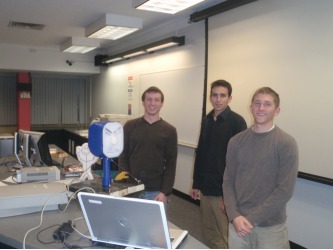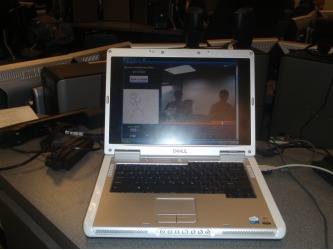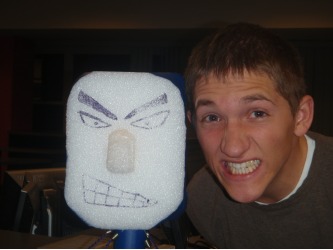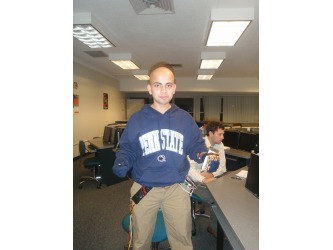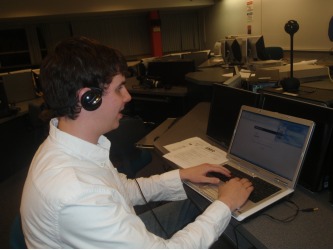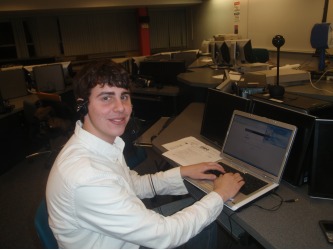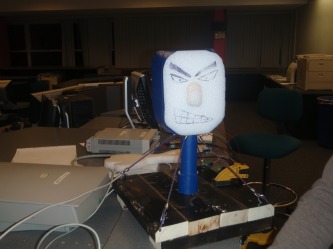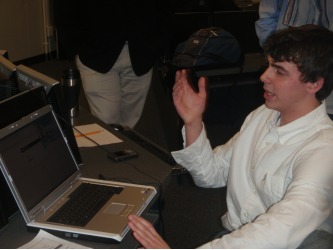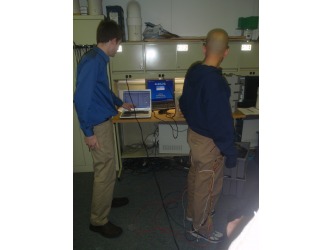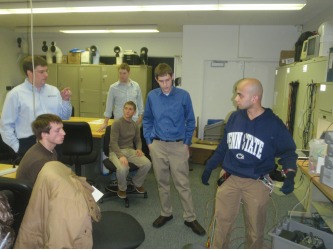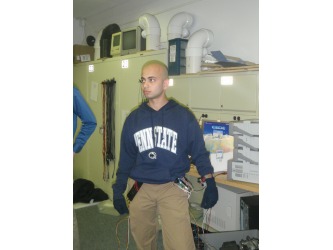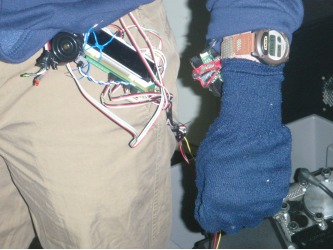Class Entrepreneurial Ventures (from previous semesters)
M2M Healthcare system for Disaster Relief
Mashavu: Networked Health Solutions for the Developing World
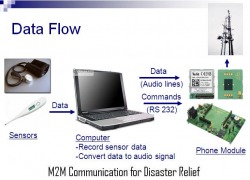
The objective of this system was to transmit biomedical data over a cellphone network to assist in disaster relief scenarios. This project later evolved into Mashavu: Networked Health Solutions for the Developing World. www.mashavu.com
There is one doctor for every 50,000 people in East Africa compared to one doctor for every 390 people in the United States. It costs a significant amount of time and money to consult a doctor and whether to even consult a doctor is a critical decision. U.S. doctors are interested in performing outreach but cannot make commitments to long-term international assignments. Mashavu enables medical professionals around the world to connect with patients in the developing world using modern technology and communications infrastructure. Trained operators at Mashavu stations in developing communities collect essential medical information including weight, body temperature, lung capacity, blood pressure, photographs, stethoscope rhythms, and basic hygiene and nutrition information for each patient on a regular basis. Web servers aggregate this information from various Mashavu stations over a cell-phone link and provide it on a web-based portal. Medical professionals can view the patient’s information and respond to the patient and the nearest doctor(s) with their recommendations. Validation efforts prove that numerous entities are willing to purchase Mashavu stations. They can charge customers a small fee, thereby making Mashavu economically sustainable and creating an additional revenue stream.
Buzby Networks
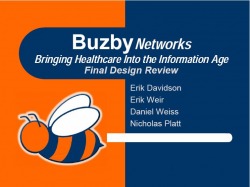
The Buzby Networks team is trying to address critical problems related to informational needs in the healthcare industry with facility-wide, low-power wireless sensor networks. Wireless sensor networks (WSNs) can be used to connect sensors throughout an entire healthcare facility to collect and interpret data in order to provide valuable information to healthcare professionals. The team is working on the development of products that apply the new ZigBee wireless sensor network technology in ways that address specific information problems in such facilities. This team has expended significant time and effort in understanding the needs of the various stakeholders in the complex healthcare industry and developed a proof-of-concept prototype. They have already received seed funding from The Technology Collaborative and the NCIIA, besides other sources.
www.buzbynetworks.com
LiftAssist, PerfectHit & Zephyr Demo Photos
LiftAssist
LiftAssist is a minimally obtrusive wearable system of sensors which monitors lifting actions performed by the wearer in real-time and warns him/her of a potentially unsafe life as soon as the lifting action commences before any physical harm could be done to the back. This system could also be used to train the user of the correct way to perform lifting action.
Zephyr Breathing Monitor
Zephyr Breathing Monitor is a microphone based system to be used in an office environment to detect an employee’s breathing rate and provide visual feedback on their computer screen through widget software. The American Institute of Stress lists deep breathing as an effective technique to reduce stress. Zephyr promotes the use of this proven stress relaxation technique by calculating the breathing rate and then qualitatively displaying that information to the user through various pictures to elicit an emotional response to help the user improve his/her breathing
Perfect Hit
PerfectHit is an affordable system designed to instruct and improve upon the actions used in technique sports such as boxing by showing a frame-by-frame video and graphical/numerical feedback which tracks and evaluates the user's progress.
COSMOS: Contact Sport Monitoring System
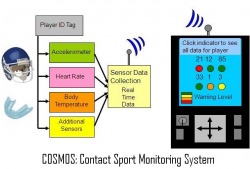
The Contact Sport Monitoring System (COSMOS) is a system of sensors designed to fit inside a helmet or mouth guard that communicates wirelessly with coaches' computers on the sideline. Through equipping athletes with a temperature sensor and a three-axis accelerometer, the athlete’s body temperature and impact to the head are monitored and relayed to a PDA over a Bluetooth network. The system is updated in real time and assists coaches in making decisions on player exit based on an established severity index for heat strokes and head injuries. The COSMOS team is targeting high school football teams initially.
BlueToe: Skiing Performance Enhancement System
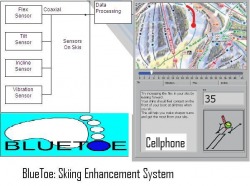
The BlueToe ski performance analysis and improvement system uses various sensors to record performance data about ski tilt, inclination, vibration, flux, and position. Data is transmitted wirelessly through Bluetooth technology to an audible readout on the skier, for immediate feedback, and also to a cellphone or personal digital assistant (PDA) or cell phone for post-descent analysis. The team developed a fully functional proof-of-concept prototype during the course and showcased their product at the Global Idea to Product competition. This venture concept was developed by a three-member team including the captain of the Penn State Ski team and chair of the Penn State Ski club. The team is working on patenting their technology and developing a compact prototype that can be fixed on to skis and tested on the slopes.
Shot Caller
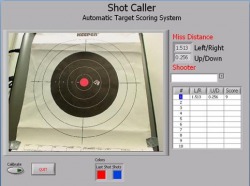
This team developed a prototype to demonstrate the feasibility of an automated target scoring system for target shooters. This system can be used by recreational shooters, police, and the military to automatically score targets in real-time, with capabilities for both visual and audio feedback. The system uses a high-resolution webcam to capture video from a spotting scope trained on a target downrange. LabVIEW software running on a laptop PC is then used to acquire and process camera images to determine the miss distance after each shot. Shot-correction feedback is then given by visual feedback on the laptop’s display, and by audio feedback of the miss distance from the PC speakers.
Cam Mouse
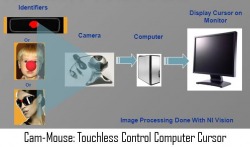
The navigation of a computer cursor using a touch pad or tactile mouse creates computer interaction difficulties. This problem is prevalent for handicapped, disabled persons, and laptop users. Moreover, a system which allows a different, unique method of computer interaction can be targeted to gamers. The Cam Mouse is a cost effective, non-intrusive design allowing users to interact with the computer without the use of hand motions. Much like a tactile mouse, the Cam Mouse enables users to dictate the position of the cursor by monitoring head and facial movements. The design simply implements a USB camera and the installation of software.
Sensowi - Zigbee based Sensor Network Management System
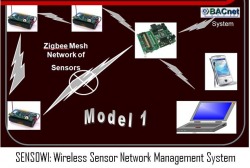
Sensor data will retrieve through wireless network to the PDA or any mobile device,Range of wireless sensor network will be defined by 30m radius for one sensor. Main attraction is user interface which will provide freedom and mobility to the user to monitor and analyze data on move.Sensowi gives power to user to optimize cost of operation for systems, energy optimization and monitor the required the sapce irrespective of the location of person. Alarm setup in the system will lead to instant response to any emergency. Sesnowi working prototype demonstrate all the functionalities required to make it a successful commercial prototype.
Interactive Classroom Videoconferencing System
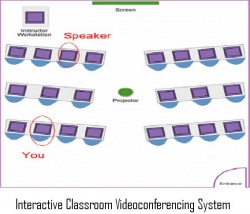
This system attempted to provide videoconferencing within a large classroom.
'Hy-Lion' safety system for a Fuel-cell based hybrid vehicle
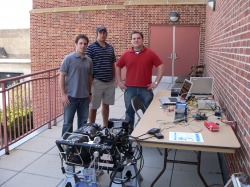
NI FieldPoint based system to monitor various parameters in a hybrid vehicle.
